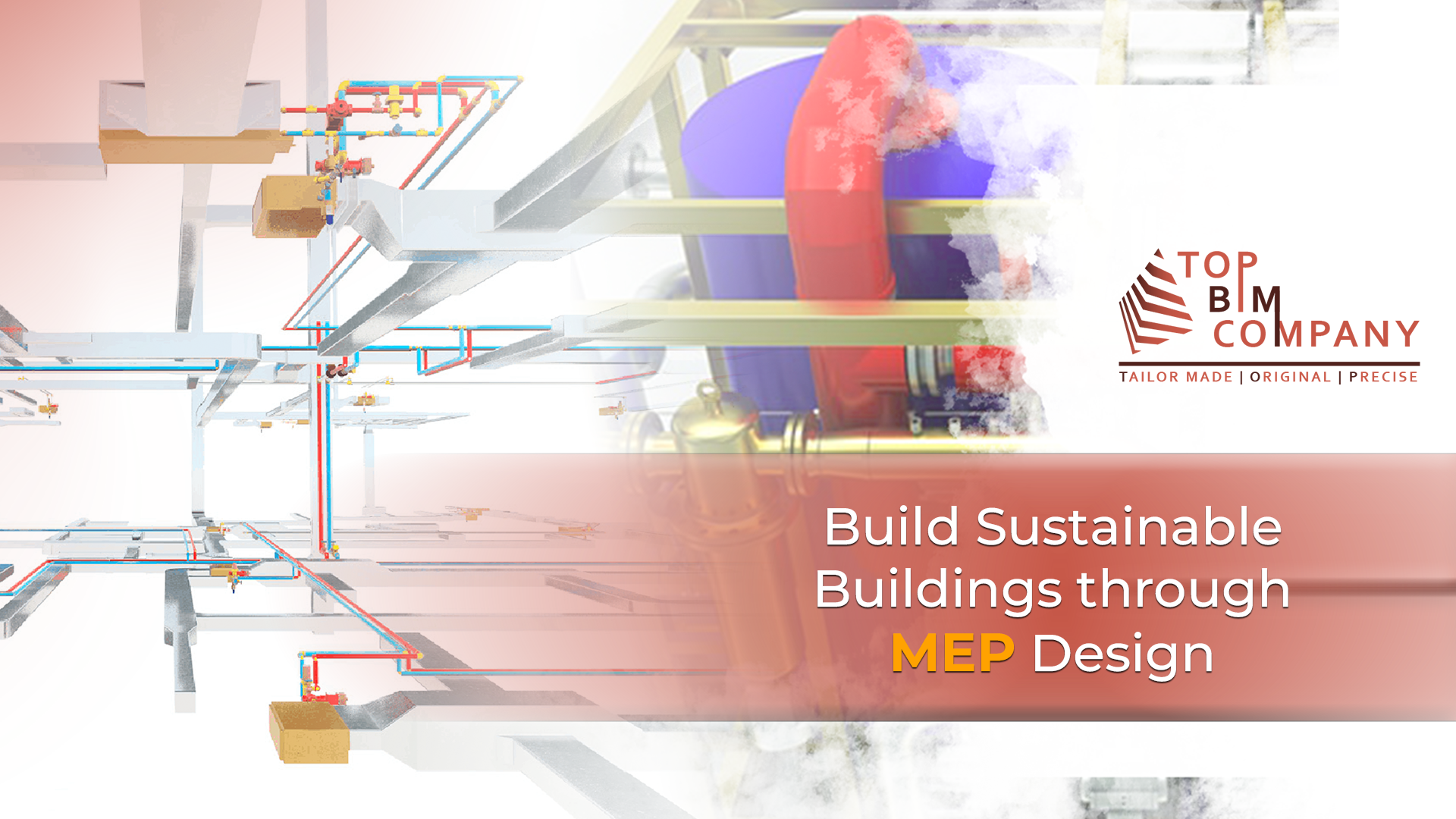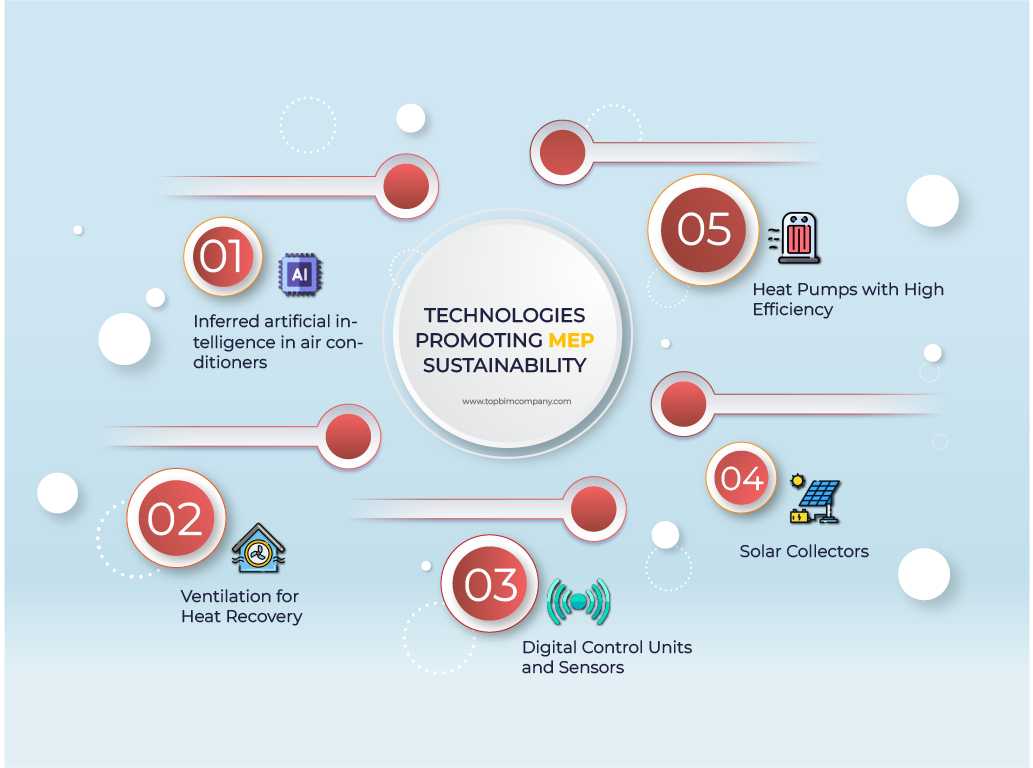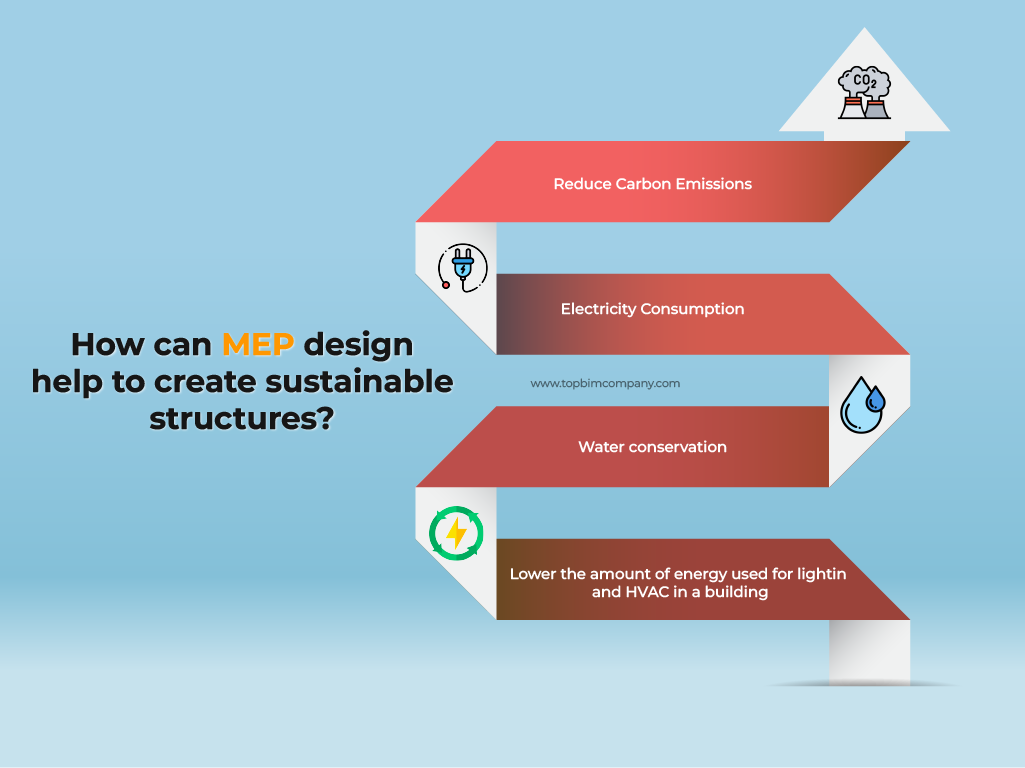Build Sustainable Buildings through MEP Design
Contents |
[edit] Introduction
With growing awareness of climate change and the building industry's adherence to the concept of "reduce, repurpose, recycle," MEP Engineers adapted MEP designs to materials and equipment in a project. Sustainability incorporated into building design is becoming more significant. Installation of an eco-friendly system that benefits the environment and keeps costs under control is often required by construction companies. Planning for the design of a sustainable building is challenging because of the rising regulatory criteria that are imposed on projects.
[edit] How can MEP design incorporate sustainability?
[edit] Technologies promoting MEP Sustainability
MEP Design techniques are primarily intended to control material waste and ensure that resources are utilised effectively.
[edit] Inferred artificial intelligence in air conditioners
HVAC BIM Services may be automated with the help of AI technology, and changes can be made to improve energy efficiency and decrease waste. Since it is impossible to predict the weather, these systems employ IOT data to make installation decisions. A few systems can monitor heating and floor temperatures to detect human activity.
[edit] Ventilation for Heat Recovery
While proper ventilation system installations can improve a building's sustainability, air circulation is vital. By minimising heat loss to provide appropriate airflow, the installation of natural environmental affected ventilation systems can utilise the low energy heating techniques.
[edit] Digital Control Units and Sensors
These devices can help with energy monitoring and control with their smart control units and sensors. Owners can use electronic devices to monitor energy usage and manage HVAC systems.
[edit] Solar Collectors:
In recent years, solar energy has been more important in areas where solar collectors have been put alongside boilers and thermostats to increase the effectiveness of solar panels. It will soon contribute to the creation of a realistic solar-thermal system for MEP Services.
[edit] Heat Pumps with High Efficiency
Due to its cost-effectiveness and versatility in the environment, this type of gear is becoming more common in the building sector. Heat pumps can be used regularly to get the most out of renewable energy sources as they are more efficient than gas pumps and less expensive.
[edit] How can sustainability provide value to an organisation?
Commercial property owners that develop sustainably can reduce running costs, which benefits both the environment and their customers. Owners and facility managers must employ the materials and renewable resources that can make the building durable to include new ideas for sustainability into the design model. If fully operational and maintained, MEP systems can employ BIM to raise the degree of sustainability operations and maintenance management. Hardware and the BIM process, two examples of how technology is advancing in MEP design, are reducing carbon footprints in projects and safeguarding the environment.
[edit] How can MEP design help to create sustainable structures?
[edit] Lower the amount of energy used for lighting and HVAC in a building -
Building designs can influence how much energy is used for lighting, heating, and cooling. A commercial building uses about 25% of its energy due to lightning and 32% due to HVAC systems. Lighting and HVAC systems are the two essential building components that consume the most energy. Therefore optimising the design and raising system efficiency at a reduced cost help to lessen the building's environmental effect.
[edit] Water conservation
A variety of designs and techniques can reduce water use and cut costs associated with water consumption. Low flow toilets and low lighting fixtures, for example, can use less water to flush when compared to typical faucets in the home. Systems that utilise greywater can reduce the amount of water consumed inside the structure. All uses in the structure require drinking water, although irrigation and toilet flushing are not among them. Greywater has a variety of uses, including washing.
[edit] Electricity Consumption
In order to reduce the quantity of electricity consumed in the building, it is required to take the appropriate steps to find the best practices and use them to reduce energy expenses for the building's owners. Lighting, computers, office equipment, and heating and cooling systems are just a few examples of the equipment in a structure that can increase electricity use. By combining the coordination between the power and special systems, programming the sizes and locations of occupied space, and other measures, the electrical system may become operational and effective.
[edit] Reduce Carbon Emissions
The building HVAC systems, electrical appliances, energy use, lightning, manufacturers of building materials, demolition of building materials, and transportation of building construction all contribute to carbon dioxide emissions in the construction industry. Carbon emissions can be lowered by using efficient designs and construction plans. Through effective HVAC systems and performing routine maintenance, performance gets improved while emissions are decreased.
Reducing the environmental effect and resource costs might give construction companies a competitive edge. BIM MEP services increase a building's lifespan and improve the health of its occupants. MEP engineers should choose sustainable products and materials that can improve the building's sustainability and minimise material waste. Construction firms and the MEP sector are primarily interested in using renewable resources, efficiency requirements, green building regulations, and energy consumption while developing building design.
[edit] Related articles on Designing Buildings
BIM Directory
[edit] Building Information Modelling (BIM)
[edit] Information Requirements
Employer's Information Requirements (EIR)
Organisational Information Requirements (OIR)
Asset Information Requirements (AIR)
[edit] Information Models
Project Information Model (PIM)
[edit] Collaborative Practices
Industry Foundation Classes (IFC)








